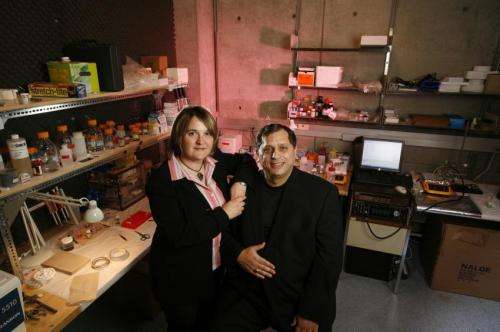Charging portable electronics in 10 minutes

Researchers at the University of California, Riverside Bourns College of Engineering have developed a three-dimensional, silicon-decorated, cone-shaped carbon-nanotube cluster architecture for lithium ion battery anodes that could enable charging of portable electronics in 10 minutes, instead of hours.
Lithium ion batteries are the rechargeable battery of choice for portable electronic devices and electric vehicles. But, they present problems. Batteries in electric vehicles are responsible for a significant portion of the vehicle mass. And the size of batteries in portable electronics limits the trend of down-sizing.
Silicon is a type of anode material that is receiving a lot of attention because its total charge capacity is 10 times higher than commercial graphite based lithium ion battery anodes. Consider a packaged battery full-cell. Replacing the commonly used graphite anode with silicon anodes will potentially result in a 63 percent increase of total cell capacity and a battery that is 40 percent lighter and smaller.
In a paper, Silicon Decorated Cone Shaped Carbon Nanotube Clusters for Lithium Ion Battery Anode, recently published in the journal Small, UC Riverside researchers developed a novel structure of three-dimensional silicon decorated cone-shaped carbon nanotube clusters architecture via chemical vapor deposition and inductively coupled plasma treatment.
Lithium ion batteries based on this novel architecture demonstrate a high reversible capacity and excellent cycling stability. The architecture demonstrates excellent electrochemical stability and irreversibility even at high charge and discharge rates, nearly 16 times faster than conventionally used graphite based anodes.
The researchers believe the ultrafast rate of charge and discharge can be attributed to two reasons, said Wei Wang, lead author of the paper.
One, the seamless connection between graphene covered copper foil and carbon nanotubes enhances the active material-current collector contact integrity which facilitates charge and thermal transfer in the electrode system.
Two, the cone-shaped architecture offers small interpenetrating channels for faster electrolyte access into the electrode which may enhance the rate performance.
Journal information: Small
Provided by University of California - Riverside




















